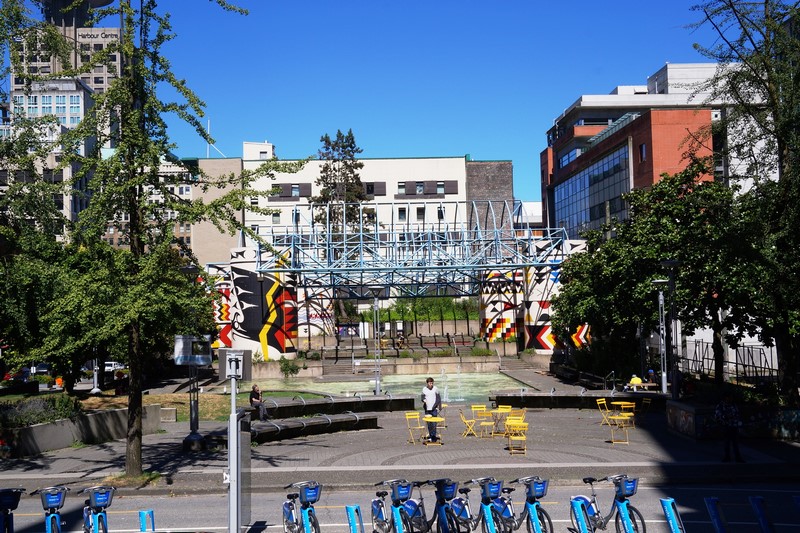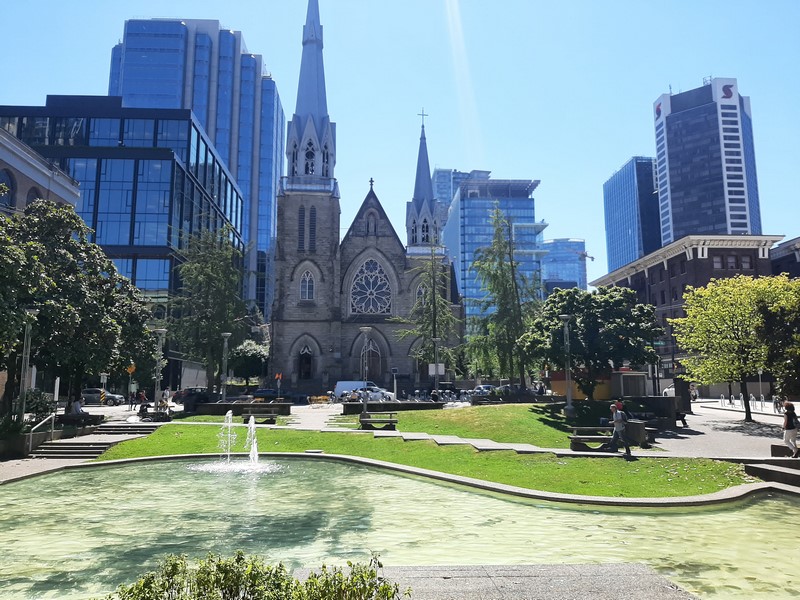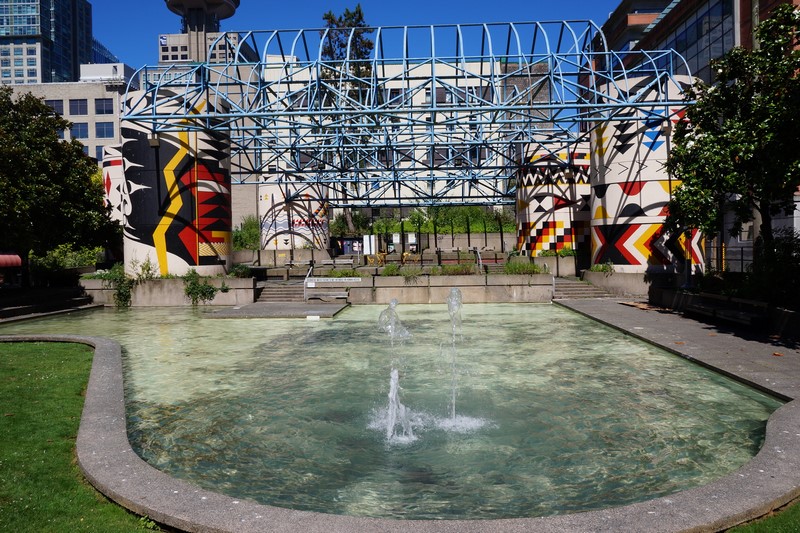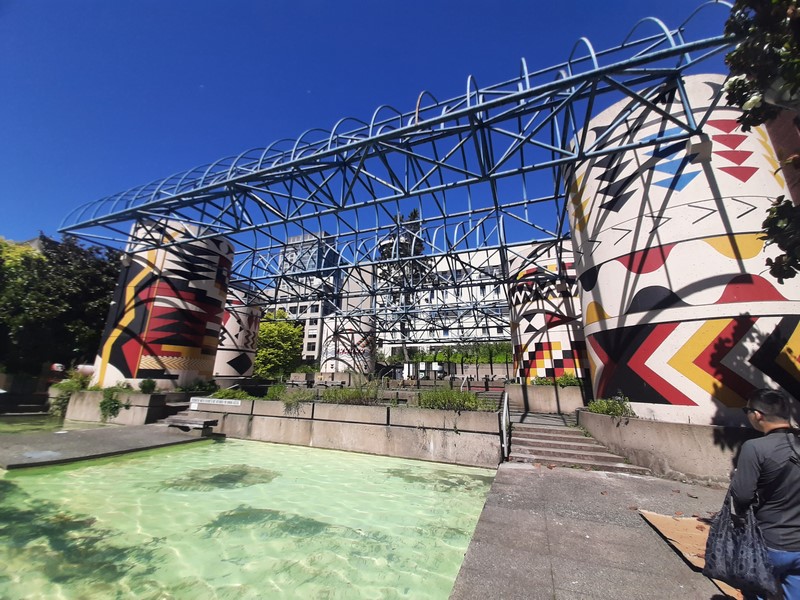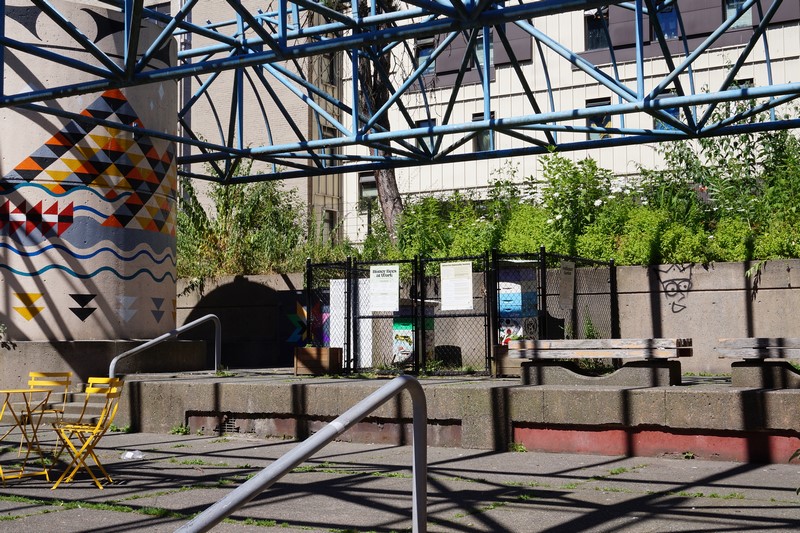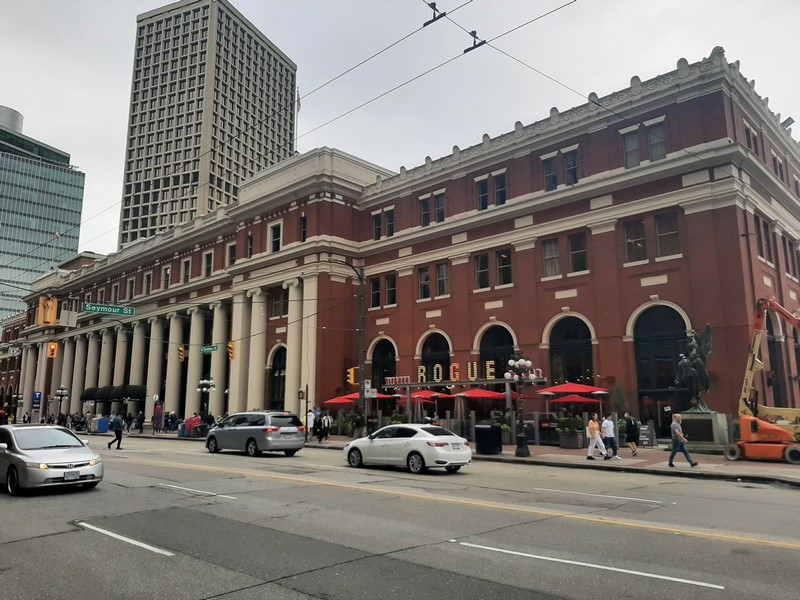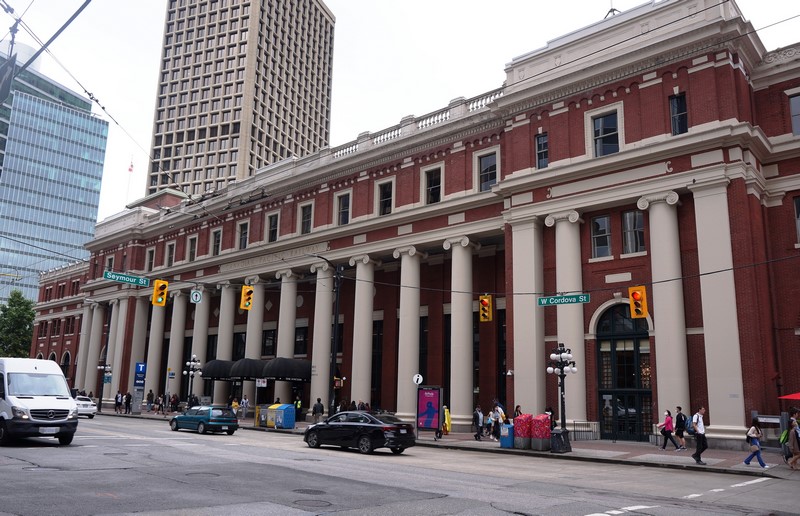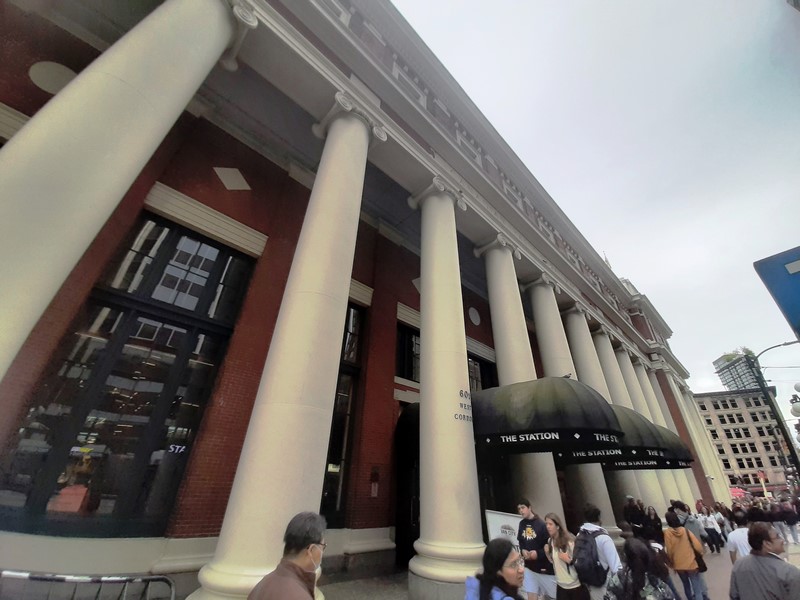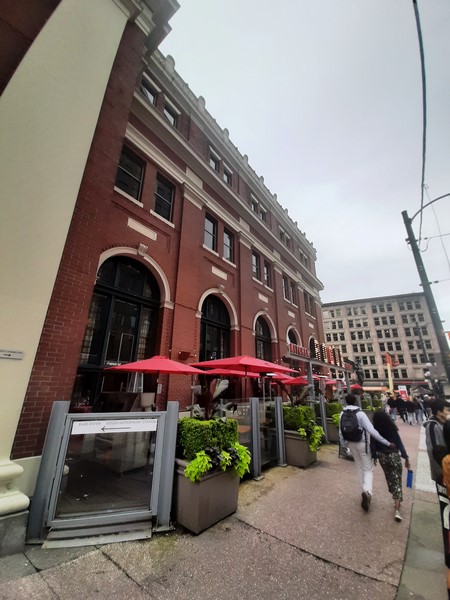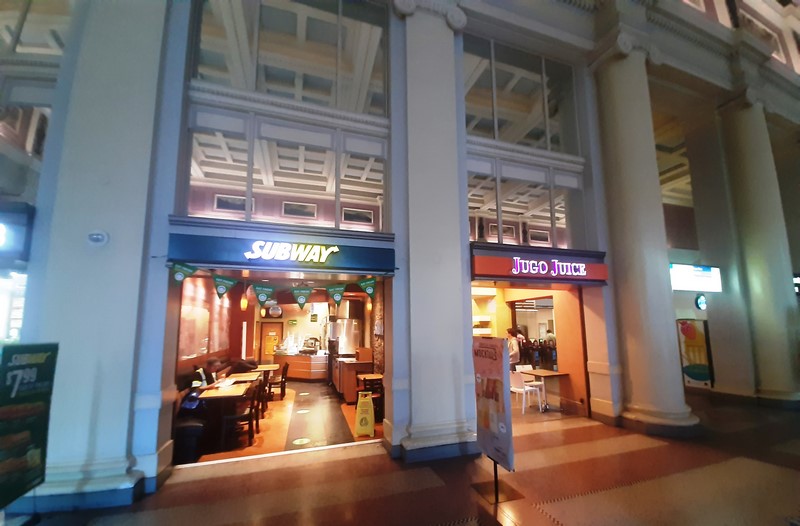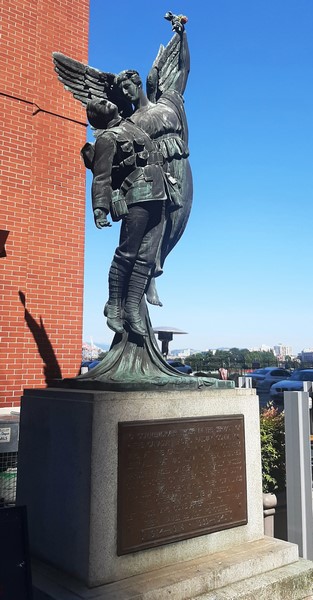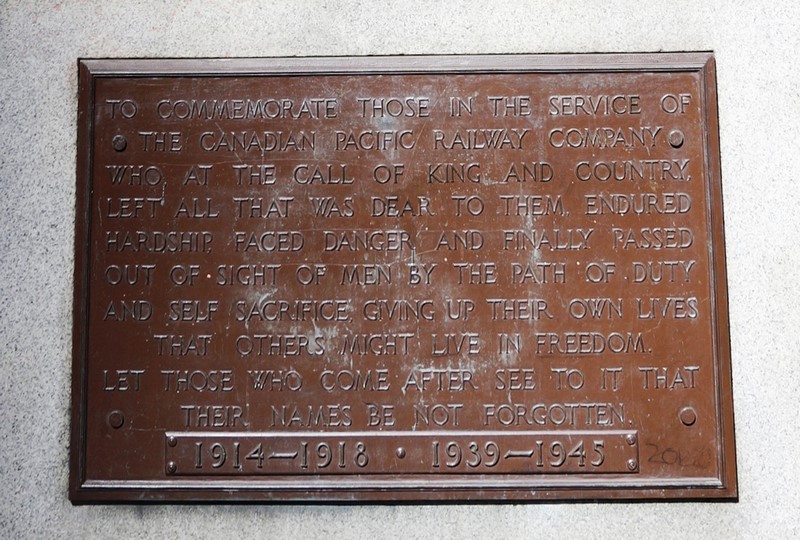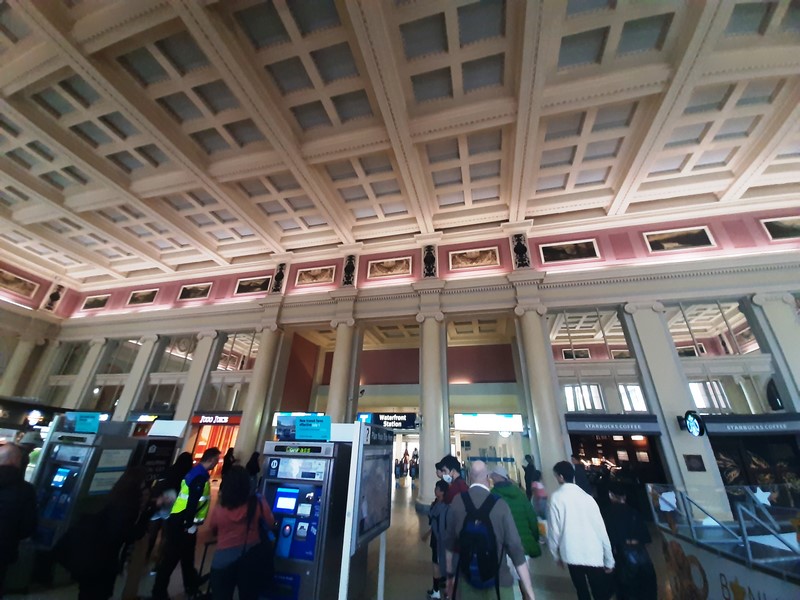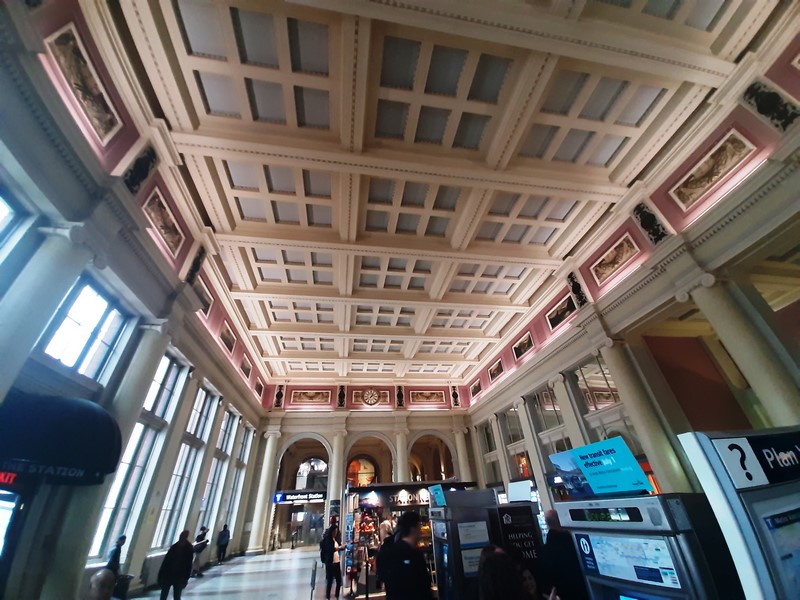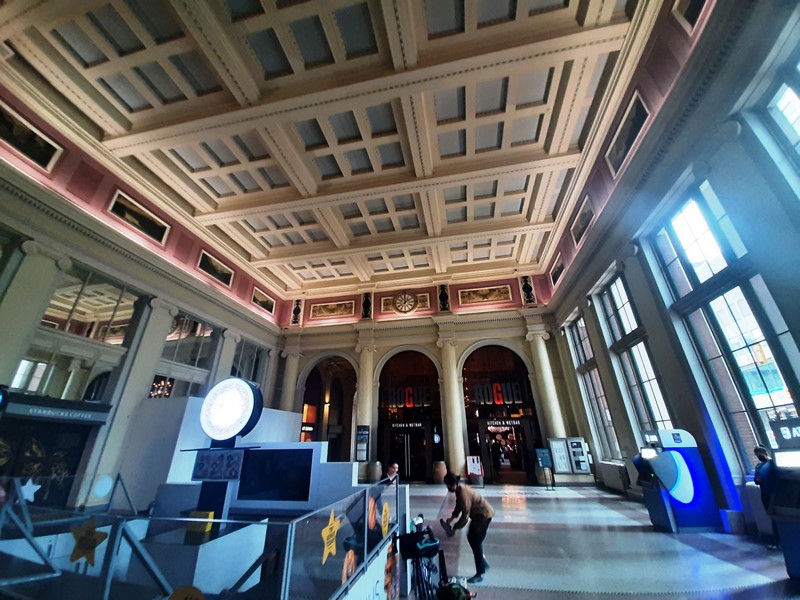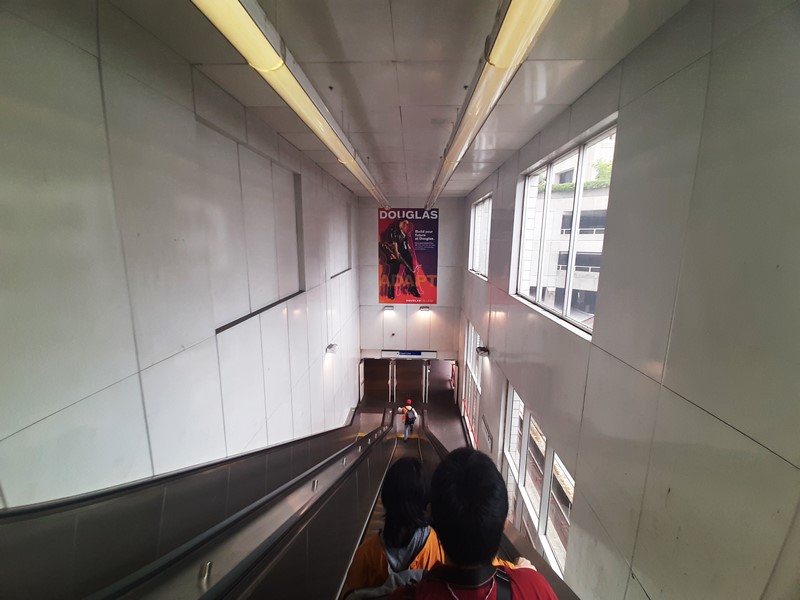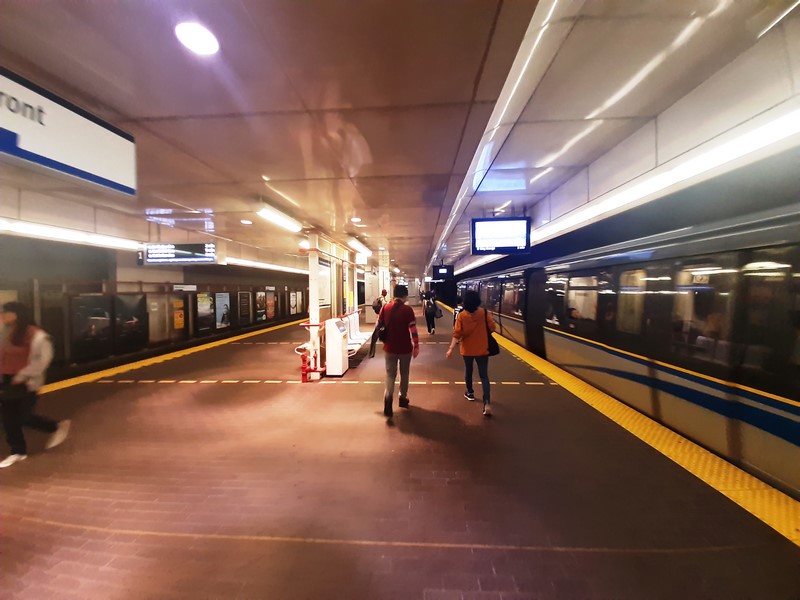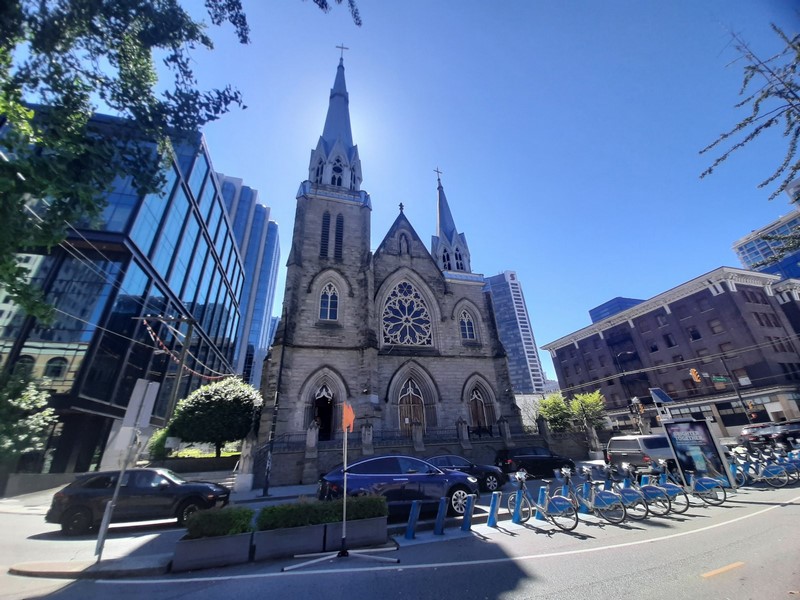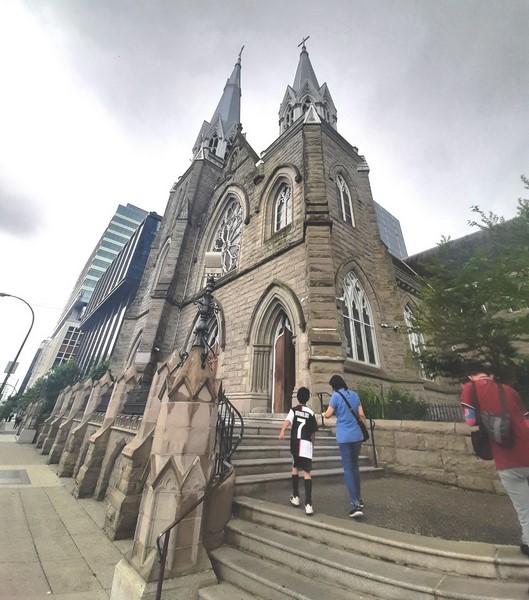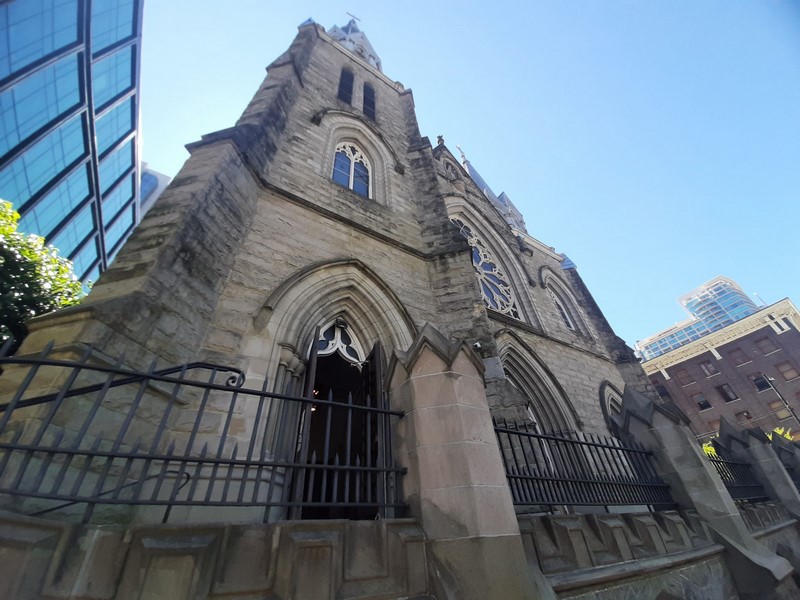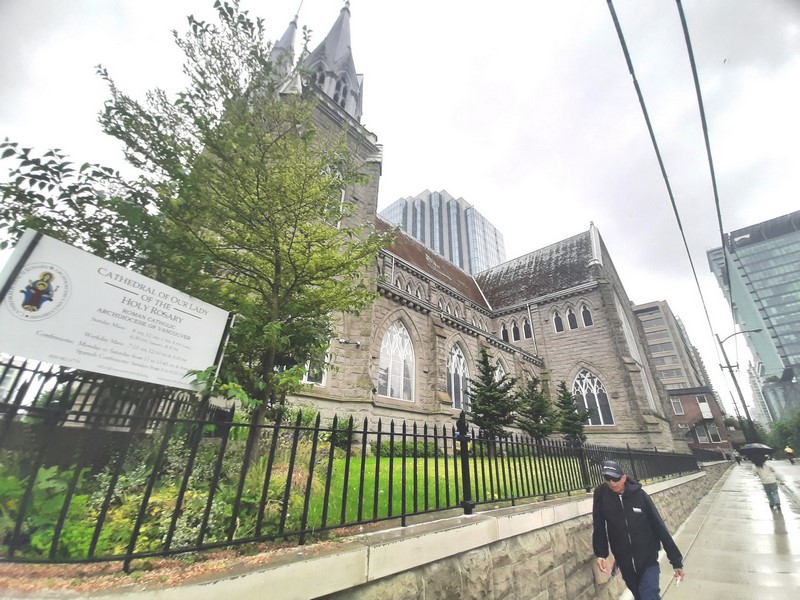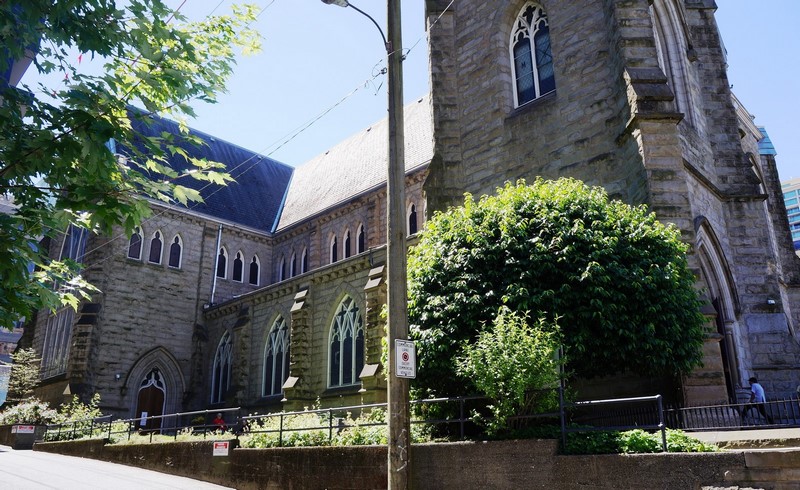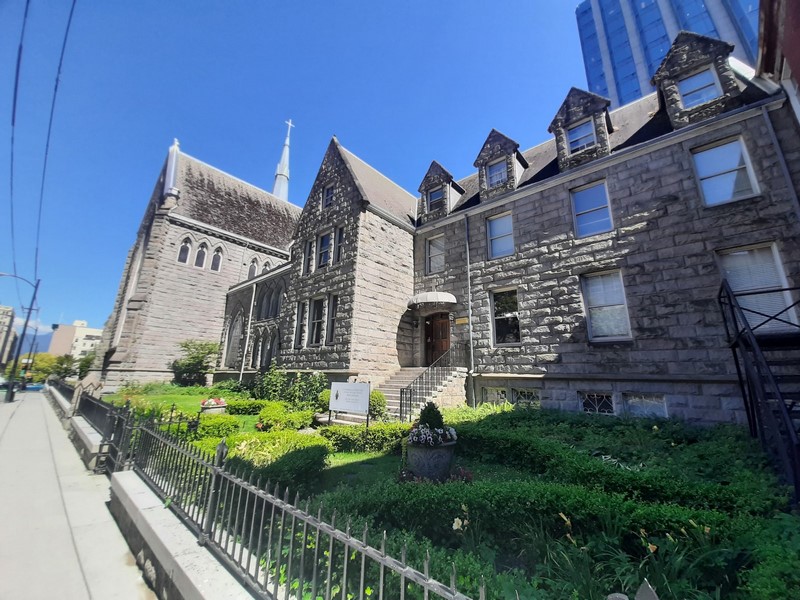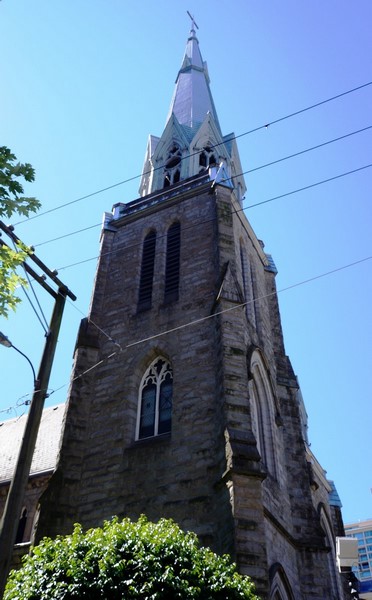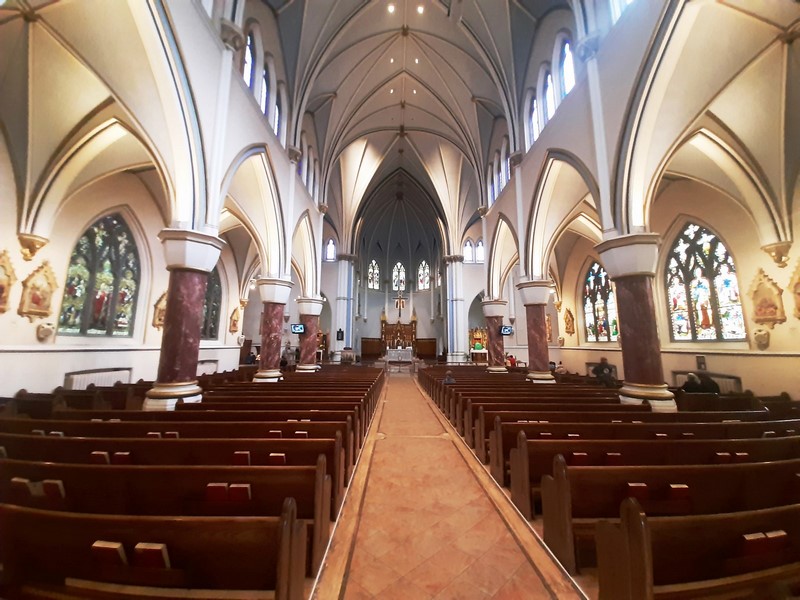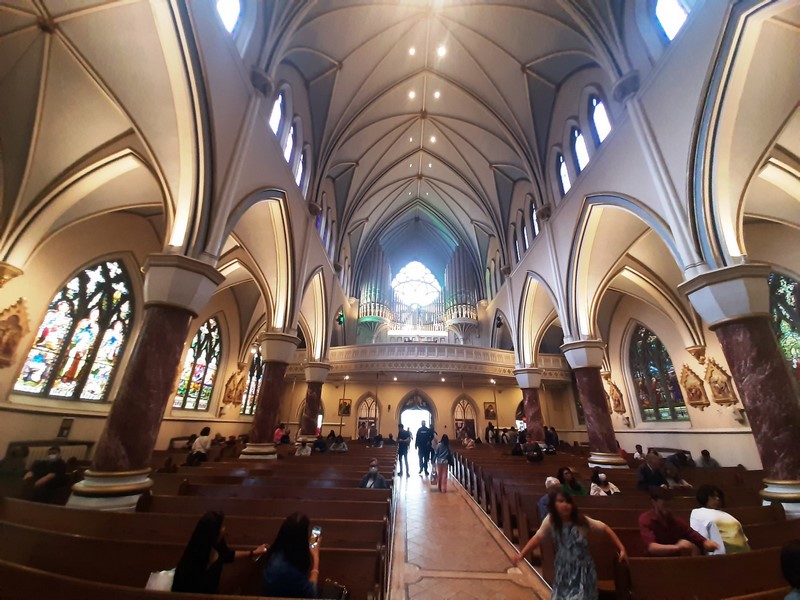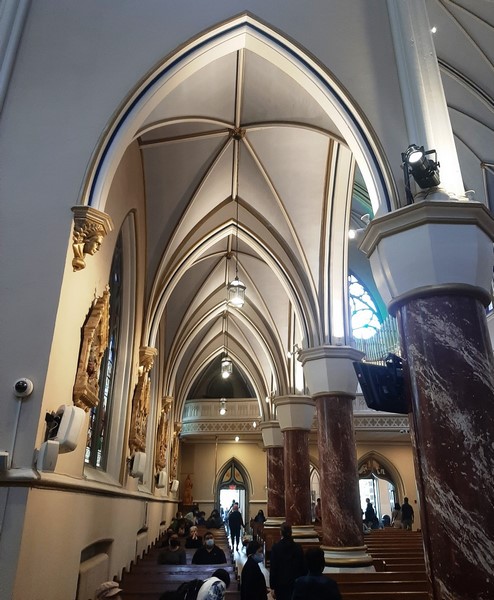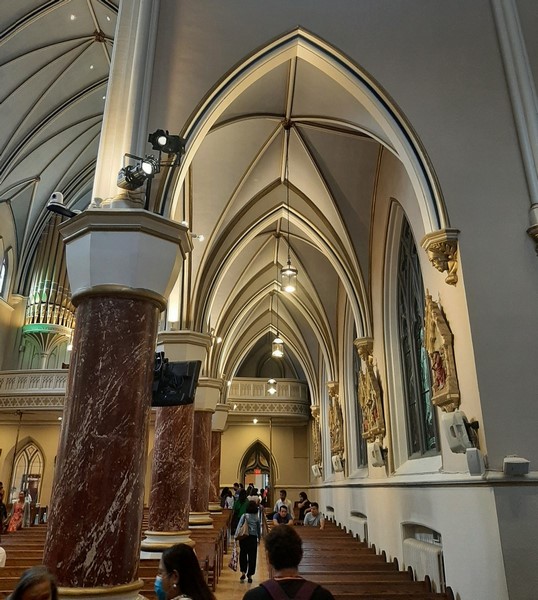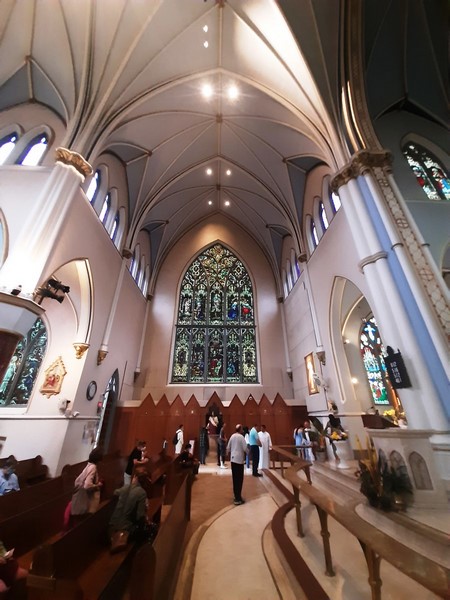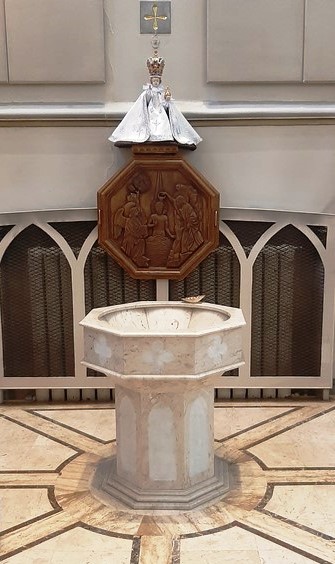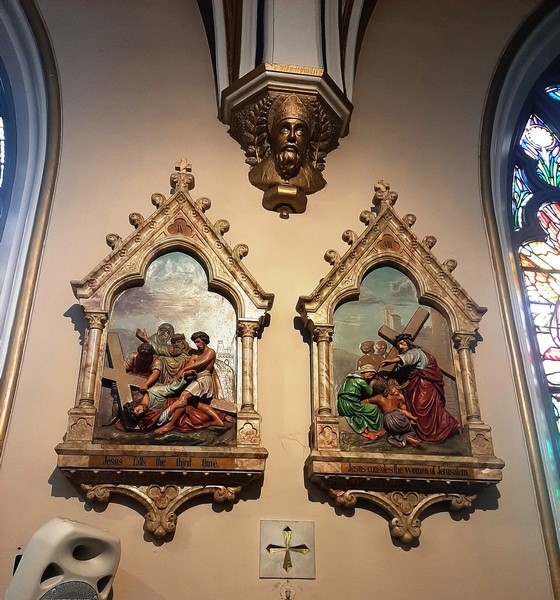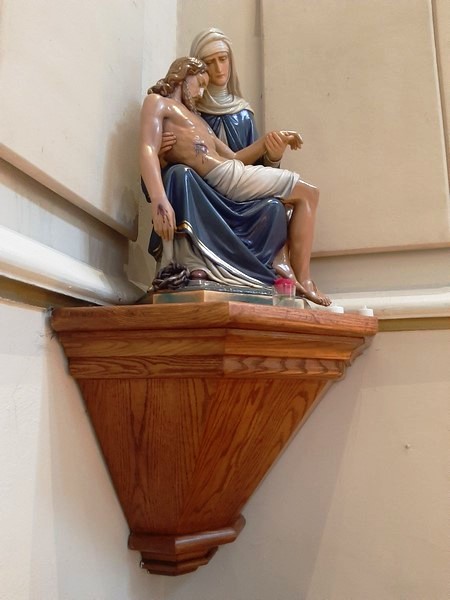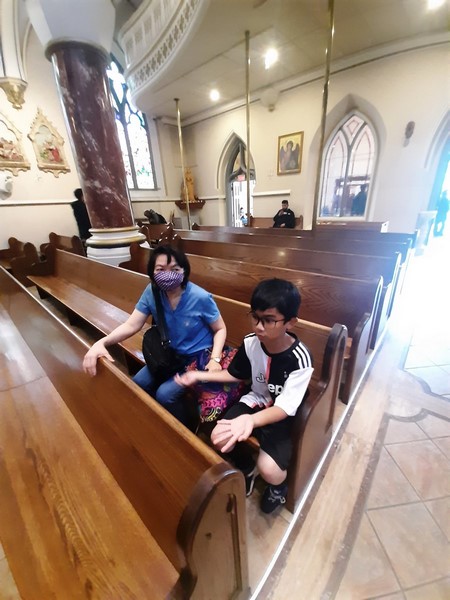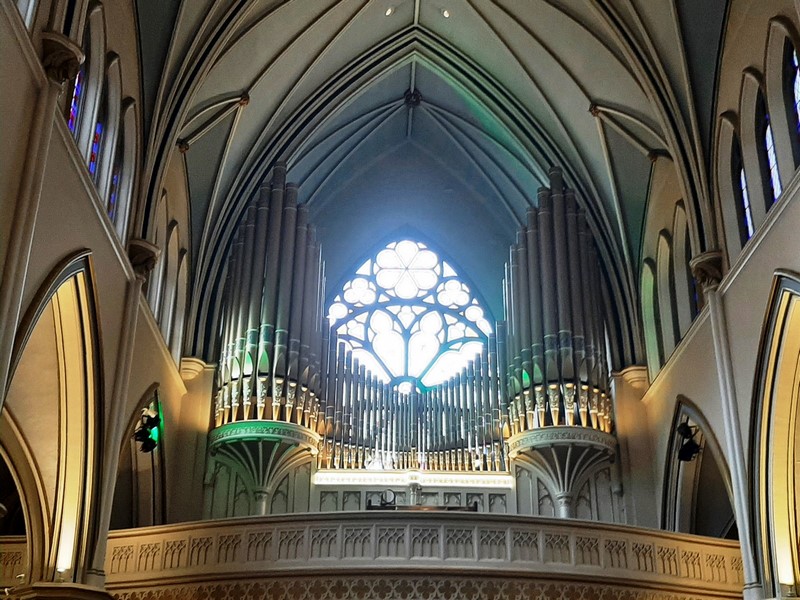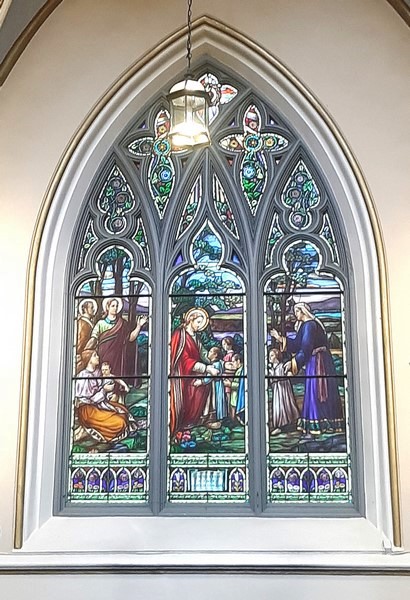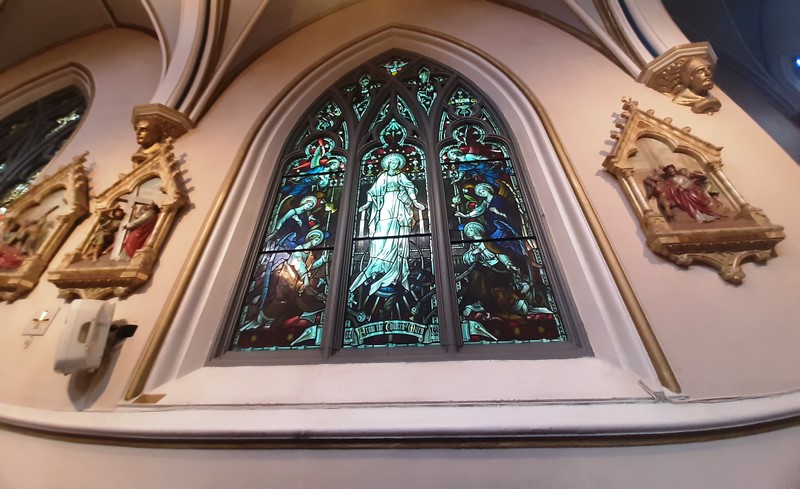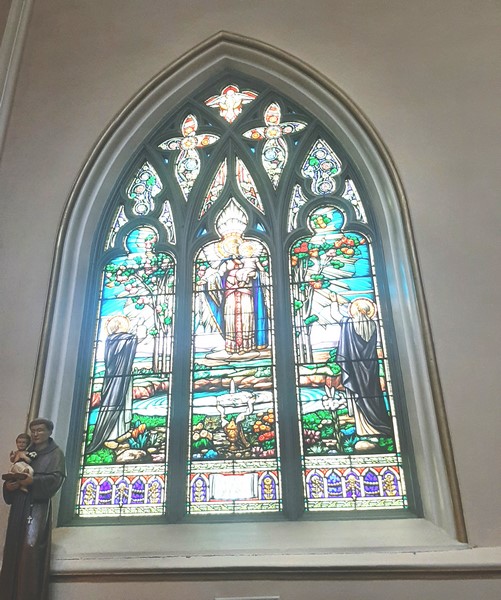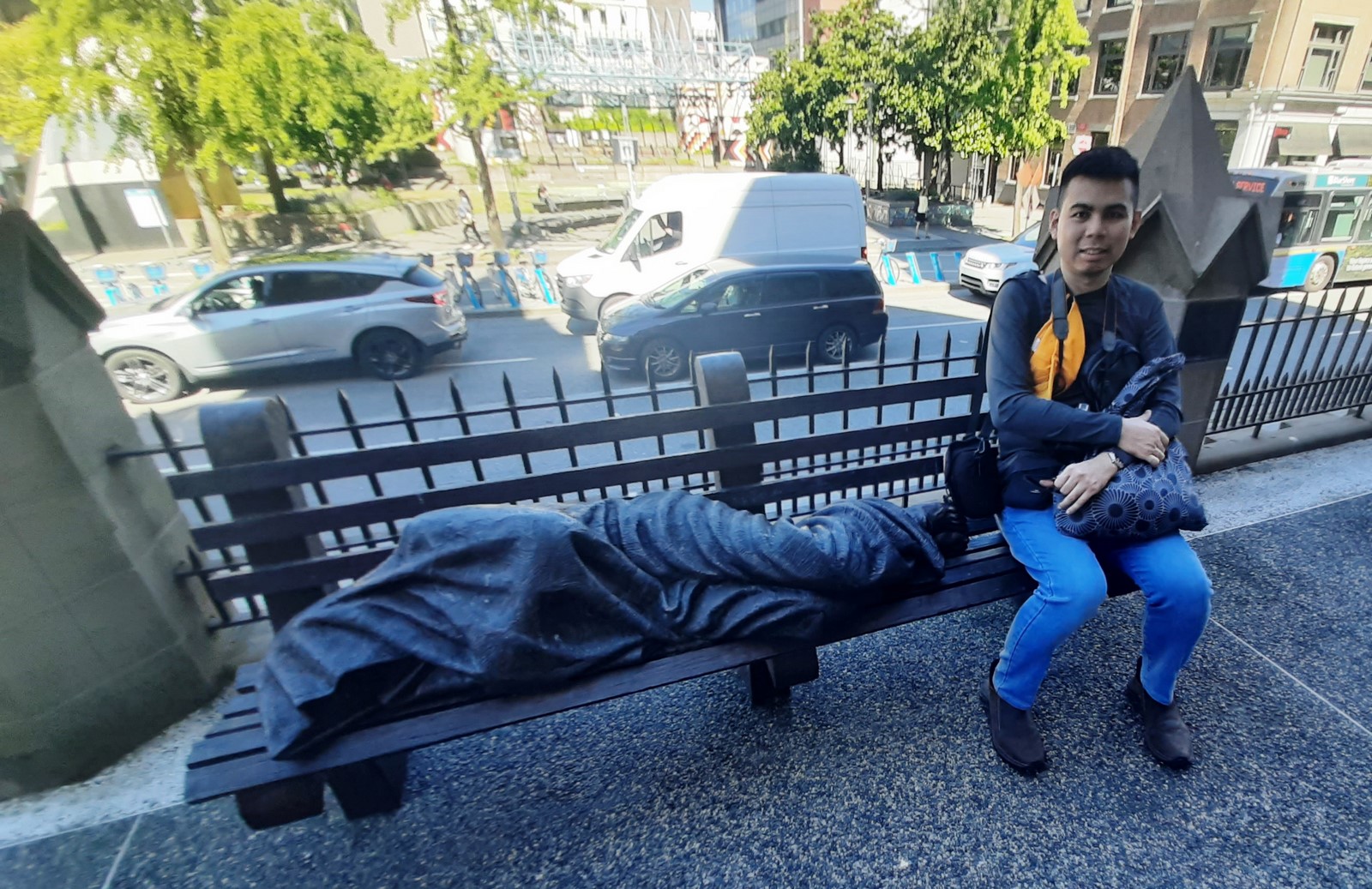Facing the Cathedral of Our Lady of the Holy Rosary, Cathedral Square is a public plaza in downtown Vancouver filled with magnolias and ginkgo trees. It was designed by Bruno Freschi and completed in 1986, just in time for the World’s Fair, as a component of a major BC Hydro underground substation on the site which supplies power to the downtown core.
Check out “Cathedral of Our Lady of the Holy Rosary”
Just north of its reflecting pool and fountain are six pillars that support a canopy structure (which previously had protective glass for inclement weather protection, but it was removed due to upkeep costs) over a paved, terraced area with seating.
In May 2021, the under-utilized plaza had a makeover that helped activate the space into a site of renewal and celebration, becoming a re-energized public space that will celebrate the visual culture of the three local nations – Musqueam, Squamish and Tsleil-Waututh.
The square’s six massive concrete cylinder columns at the northeast corner of the intersection of Dunsmuir Street and Richards Street, just across from the cathedral, were used as a blank canvas for a First Nations-themed mural called “Blanketing the City IV,” the fourth in a series of first large-scale public art collaboration between weaving artists. Other past works were applied to the two pillars of the Granville Street Bridge, below Granville Island, and the southern facade of the former Biltmore Hotel at 395 Kingsway, now used as supportive housing.
The design of the installation, organized by the Downtown Vancouver Business Improvement Association and the Vancouver Mural Festival, is a collaboration between Musqueam artist Debra Sparrow (involved in the revival of xʷməθkʷəy̓əm or Musqueam weaving for 25+ years), Squamish chief and accomplished weaver (co-founder of the L’hen Awtxw Weaving House) and teacher Janice George (Sḵwxwú7mesh) and the Tsleil-Waututh’s Angela George (səlilwətaɬ) who has dedicated her career to the betterment of First Nations people and communities.
Cathedral Square: 566 Richards St, Vancouver, BC V6B 1X4.

